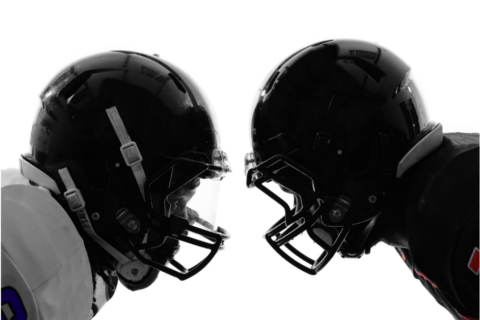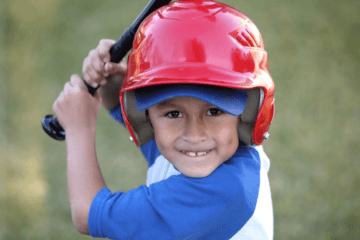
Concussion Prevention or Performance Enhancement?
Published on: January 7, 2019
Much has been discussed about the importance of concussion education, especially as it relates to our youth playing sports. While we don’t want to scare off parents from having their children participate, we do want them to be knowledgeable in the basics of concussion education. What does this include? It includes the inherent risk associated with playing certain sports regardless of how much you do to maximize prevention and protection interventions. It includes knowing the signs and symptoms of a sport-related concussion (SRC) so that if recognized it can facilitate an appropriate referral for a proper assessment. It also includes knowing the importance of not returning to participation until completing an evidence-based rehabilitation protocol and being fully cleared by a qualified physician who is contemporarily trained in concussion management.
 As healthcare providers, we all want parents to be as educated as much as possible about sport concussion. Our goal is to have them as active collaborators in the care of their kids. The harsh reality is that while many parents do in fact have a genuine and sincere interest to play a positive role in the process, the mere topic of concussion education is not considered to be appealing and doesn’t draw as much interest as we would like it to. Yes, it has hit the headlines more so lately than ever before. However, the typical story on the news about sport concussion is not usually one with a positive ending. Rather, it is usually about the dangers of concussions when playing sports and more often than not casts a negative light on playing sports like football, for example, rather than helping the general public learn how to best manage the inherent risk associated with playing sports and all of the other benefits associated with activity: teamwork, work ethic, leadership, disciple, etc.
As healthcare providers, we all want parents to be as educated as much as possible about sport concussion. Our goal is to have them as active collaborators in the care of their kids. The harsh reality is that while many parents do in fact have a genuine and sincere interest to play a positive role in the process, the mere topic of concussion education is not considered to be appealing and doesn’t draw as much interest as we would like it to. Yes, it has hit the headlines more so lately than ever before. However, the typical story on the news about sport concussion is not usually one with a positive ending. Rather, it is usually about the dangers of concussions when playing sports and more often than not casts a negative light on playing sports like football, for example, rather than helping the general public learn how to best manage the inherent risk associated with playing sports and all of the other benefits associated with activity: teamwork, work ethic, leadership, disciple, etc.
How then do we successfully educate the masses without either instilling too much fear and alarm about concussions, yet not inappropriately downplaying the importance of the valuable knowledge? How do we peak interest in parents wanting to learn and participate in concussion education programs? I think the answer is quite simple. The key is in the title of the program. If we continue to call it a concussion education program, we will continue to see the same types of responses or lack of interest. Remember, the definition of insanity is “doing the same thing over and over again while expecting a different result”.
 If “concussion education” or “concussion prevention” is not the best option to serve as a catchy title, what is? Kids, and of course their parents (and coaches) are much more interested in learning how to run faster, jump higher, score more points, and even play better defense when it compares to learning about how to prevent and treat concussions. So why not use the phrase “performance enhancement” in the title somehow? Examples could be “Improving performance using your brain” or “The brain as a muscle to play better”. Don’t laugh! These are different, these are catchy, and if you try them at the very least you may yield a low interest from participants, no worse than past attempts at drawing a crowd to attend your program. However, with some creativity and some luck, you may actually peak people’s interest to learn more about what you are planning to teach. This is not false marketing, nor is my intention to have you mislead people. Rather, I look at this as creative marketing and an opportunity to offer a program that is different than most others.
If “concussion education” or “concussion prevention” is not the best option to serve as a catchy title, what is? Kids, and of course their parents (and coaches) are much more interested in learning how to run faster, jump higher, score more points, and even play better defense when it compares to learning about how to prevent and treat concussions. So why not use the phrase “performance enhancement” in the title somehow? Examples could be “Improving performance using your brain” or “The brain as a muscle to play better”. Don’t laugh! These are different, these are catchy, and if you try them at the very least you may yield a low interest from participants, no worse than past attempts at drawing a crowd to attend your program. However, with some creativity and some luck, you may actually peak people’s interest to learn more about what you are planning to teach. This is not false marketing, nor is my intention to have you mislead people. Rather, I look at this as creative marketing and an opportunity to offer a program that is different than most others.
How can you teach the same content yet title the presentation something else? We do this all of the time. For example, there might be thousands of presentations given to the community on concussion education and amongst them there may literally be hundreds of different titles used. In this case, our goal is to talk about the brain and how it can improve performance – which is similar to how it could impact or halt performance as is seen when a concussion occurs. A presentation might focus on the roles of the brain such as how it sends messages to the muscles to move quickly and make reactionary decisions. The presentation might also include discuss the importance of the brain with vision, balance, and memory. If you can’t see clear, you might drop passes or miss shots. If your balance is off, you will not perform successfully and safely on the balance beam. If your memory is not optimal, you will forget plays and routes.
An example of a program agenda could look like this:
The Brain as a Muscle to Play Better
I. Course Introduction & Welcome
a. Introduce speaker & role
b. Briefly state goals of the program (make it specific to the audience, ie football, soccer, gymnastics)
c. Let them know anticipated length of time of the program and ability for Q & A
II. Functions of the Brain
a. Describe how the brain works to help components of performance (vision, balance, decision-making, etc…)
b. Give examples of how performance is negatively affected when the brain is not working optimally
III. What is a concussion?
a. Explain how concussions occur
b. Identify the signs and symptoms of a sport concussion
c. Share variety of methods to report these signs & symptoms in a timely manner
d. Explain the importance of removal from play for proper assessment (2nd Impact syndrome)
IV. Playing your best
a. Briefly explain importance return to play protocols
b. Demonstrate the importance to the concussed player of a safe return (both health-wise and performance-wise)
c. Demonstrate the importance to a team of a player’s return when one is ready (not forgetting plays, not playing poor defense, etc…)
V. Summary
a. Review of brain functions
b. Review of concussion symptoms
c. Review of ways to report a concussion
d. Review of safe clearance to play
e. How to contact you with additional questions
This program can be delivered in 30 minutes, allowing for question and answer time. Too much longer of a scheduled program and people may not find the time to attend. If the program is shorter, people may not view it as being worthy of their time, seeing as though the transportation time back and forth could be longer than the program. Be sure to tailor the program to the audience. Not all concussion education programs need to discuss the sport of football. The more focused a program is to a given audience, the more likely knowledge transfer of the important information can occur.
To add a fun activity to the program, you could always ask 3-5 quiz questions at the beginning to test participants knowledge at the beginning of the program, then re-ask the same questions after your presentation.
An example of questions that have been proven to serve as good icebreakers include:
True or False. If a player does not have a loss of consciousness (LOC) after sustaining a concussion, they may still be able to return to play. (False, a player should be removed from all participation following a concussion regardless of LOC or not, and not return until fully cleared by a physician.)
True or False. Signs and symptoms resulting from a concussion can develop 1-2 days after the injury occurs. (True, symptoms can develop 1-2 days later, and in some cases symptoms like memory loss and emotional behaviors may not be noticed until weeks or months later.)
The ability to deliver an educational yet engaging concussion education program is only limited
by your creativity. Start 2019 off with a creative mind and make a difference!